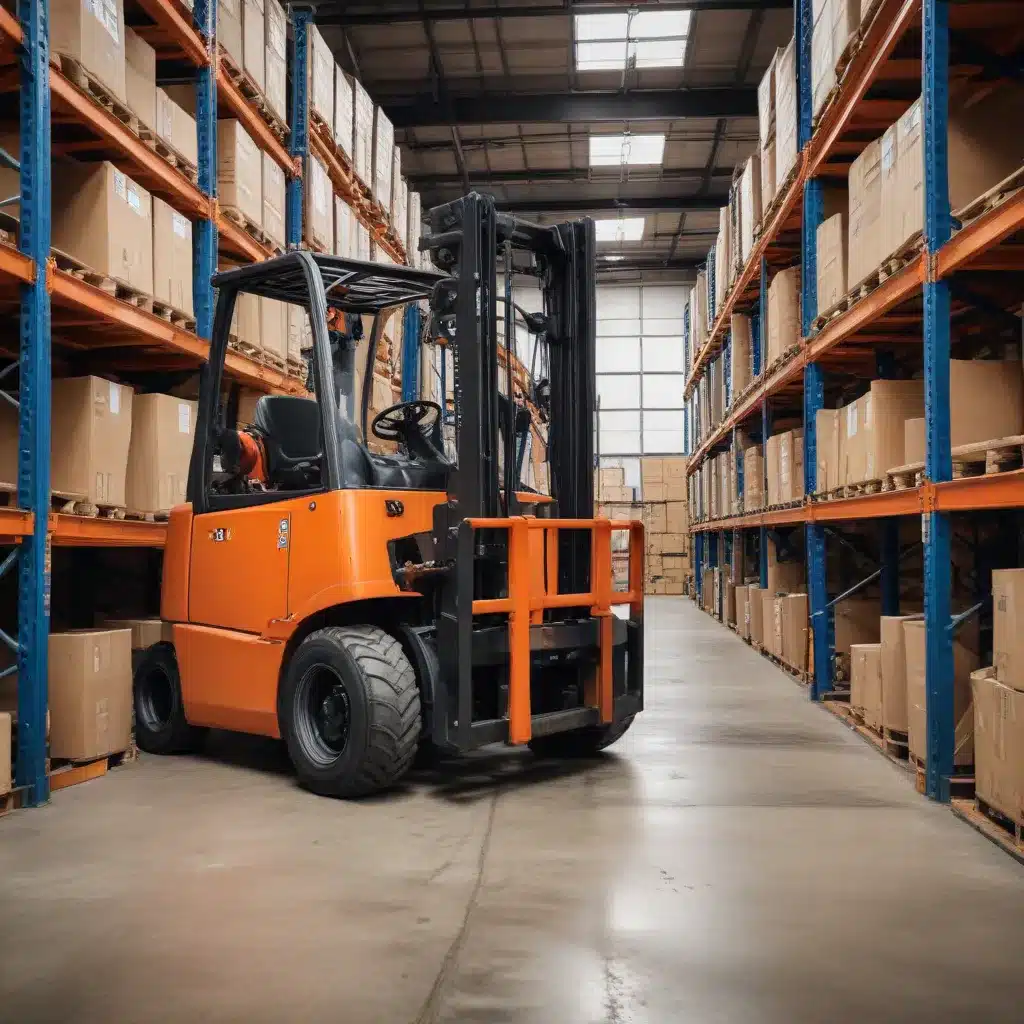
Navigating the Challenges of Forklift Parts Obsolescence
As a seasoned industry expert in forklifts, warehousing, and logistics, I’ve witnessed firsthand the critical importance of effective forklift parts obsolescence management. In today’s fast-paced business environment, where equipment reliability and uptime are paramount, ensuring the continuous availability of essential forklift parts is a strategic imperative that can make or break an operation.
Understanding the Risks of Forklift Parts Obsolescence
Forklift parts obsolescence is an unavoidable reality in the material handling industry. As manufacturers continuously innovate and upgrade their product lines, legacy forklift models and their associated components become increasingly difficult to source. This can lead to extended equipment downtime, escalating maintenance costs, and the need for costly equipment replacements – all of which can have a significant impact on an organization’s bottom line.
To mitigate these risks, it’s essential for logistics and warehouse managers to adopt a proactive approach to forklift parts obsolescence management. By implementing robust strategies and leveraging the right tools, organizations can ensure that critical forklift components are readily available, minimizing the disruption caused by parts shortages and prolonged equipment downtime.
Mastering the Four Pillars of Forklift Parts Obsolescence Management
Effective forklift parts obsolescence management rests on four key pillars: reliable data sources, master data cleansing, obsolescence information tracking, and the strategic deployment of spare parts management software solutions. By addressing each of these pillars, organizations can build a comprehensive and resilient parts availability strategy that supports their overall equipment maintenance and operational efficiency goals.
1. Reliable Data Sources
The foundation of successful forklift parts obsolescence management is access to accurate, up-to-date, and comprehensive equipment data. This includes detailed information on forklift models, their components, part numbers, and manufacturer specifications. Without a reliable data source, identifying the right replacement parts can become a time-consuming and error-prone process, leading to increased search times and manual efforts.
To ensure the integrity of their equipment data, organizations should leverage authoritative sources directly from original equipment manufacturers (OEMs) or trusted third-party providers. These data sources can serve as a single point of truth, enabling seamless parts identification and procurement.
2. Master Data Cleansing
Even with a reliable data source in place, organizations often face the challenge of managing inconsistent, duplicate, or incomplete equipment records within their enterprise resource planning (ERP) or inventory management systems. This data quality issue can significantly hinder efforts to accurately track and procure forklift parts, ultimately impacting operational efficiency and parts availability.
Implementing a robust master data cleansing process is crucial to maintaining consistently high-quality equipment data. This includes identifying and correcting any discrepancies or errors, as well as establishing ongoing data quality checks and enrichment processes to ensure the integrity of newly created records.
3. Obsolescence Information Tracking
As forklift models and their associated components reach the end of their life cycle, it is essential for organizations to stay informed about parts discontinuation and product change notifications from OEMs. Proactively tracking this obsolescence information allows logistics and warehouse managers to make data-driven decisions about inventory levels, procurement strategies, and equipment replacement planning.
By having transparency into available successor products and alternative supply sources, organizations can optimize their parts inventory, reduce procurement costs, and ensure continuous parts availability, even for legacy forklift models.
4. Spare Parts Management Software Solutions
Manual data creation and management often lead to errors in ERP systems, resulting in duplicate parts records, the retention of discontinued items, or the entry of incorrect information. These data quality issues can have a direct impact on procurement costs, inventory efficiency, and equipment downtime.
To address these challenges, organizations can leverage specialized spare parts management software solutions that automate and streamline the entire parts obsolescence management process. These tools not only provide a centralized and reliable data source but also facilitate data cleansing, obsolescence tracking, and the seamless integration of parts information into existing ERP systems.
Putting the Pieces Together: A Comprehensive Approach to Forklift Parts Obsolescence Management
By addressing the four pillars of forklift parts obsolescence management, organizations can build a comprehensive and resilient strategy that ensures the continuous availability of critical forklift components. This holistic approach can deliver tangible benefits, including:
-
Reduced Equipment Downtime: Proactive obsolescence management and readily available replacement parts can significantly reduce the time required to restore forklift operations, minimizing the impact on warehouse productivity and customer service.
-
Optimized Inventory Levels: Informed procurement decisions based on accurate obsolescence data can help organizations maintain the right balance of parts inventory, avoiding costly overstocking or stockouts.
-
Improved Maintenance Planning: Visibility into parts availability and lead times allows for more effective maintenance scheduling, ensuring that preventive and corrective actions can be carried out in a timely manner.
-
Cost Savings: By mitigating the risks of parts shortages and unnecessary equipment replacements, organizations can realize substantial savings in their overall forklift maintenance and operations budgets.
-
Enhanced Operational Resilience: A comprehensive parts obsolescence management strategy strengthens an organization’s ability to adapt to changes in the material handling landscape, ensuring long-term equipment reliability and operational continuity.
Embracing the Future of Forklift Parts Obsolescence Management
As the material handling industry continues to evolve, the importance of forklift parts obsolescence management will only grow. By embracing a proactive, data-driven approach that aligns with the four key pillars, organizations can position themselves for success in an increasingly competitive and dynamic market.
To learn more about implementing a best-in-class forklift parts obsolescence management strategy, I encourage you to explore the resources and insights available on Forklift Reviews. Together, we can navigate the challenges of forklift parts obsolescence and ensure that your material handling operations remain resilient, efficient, and future-ready.

